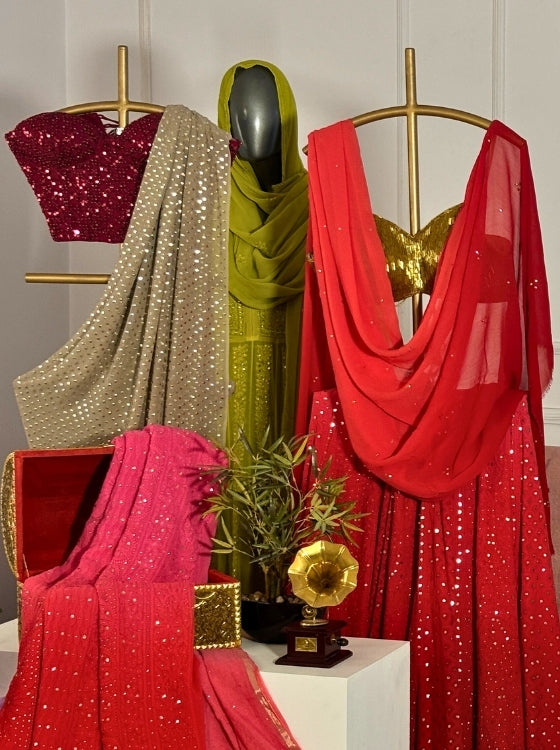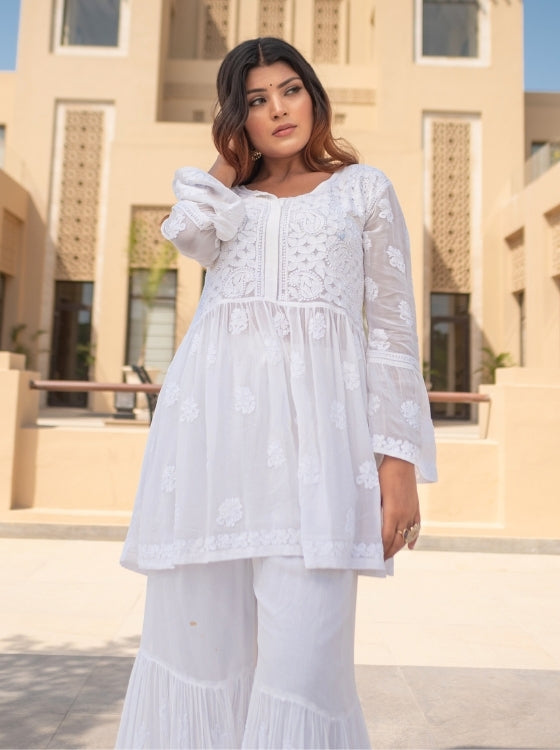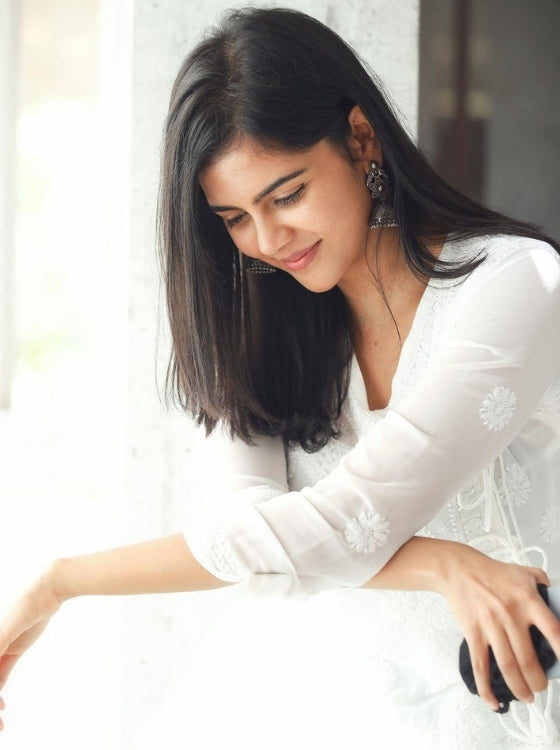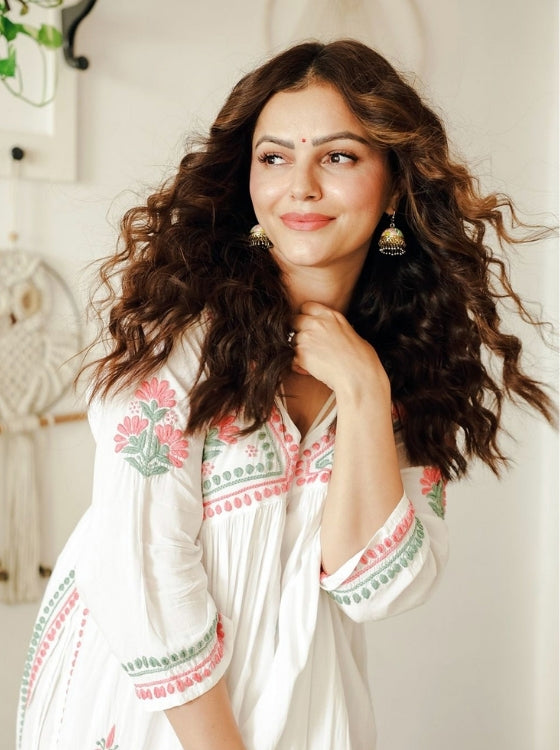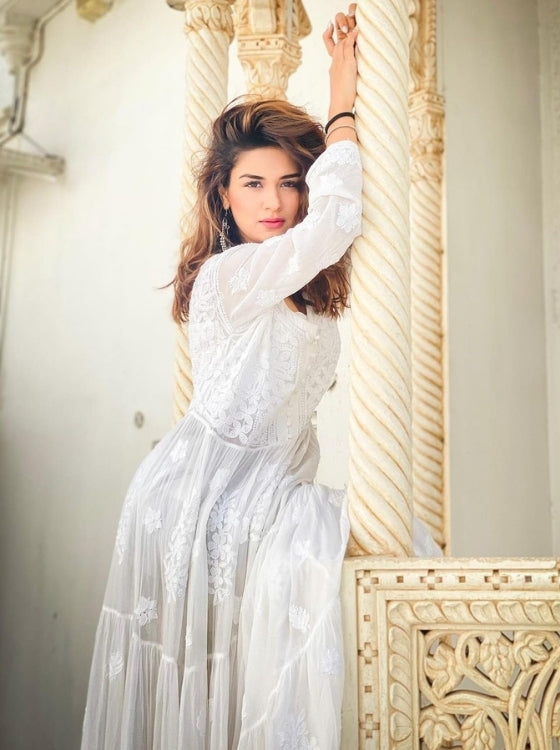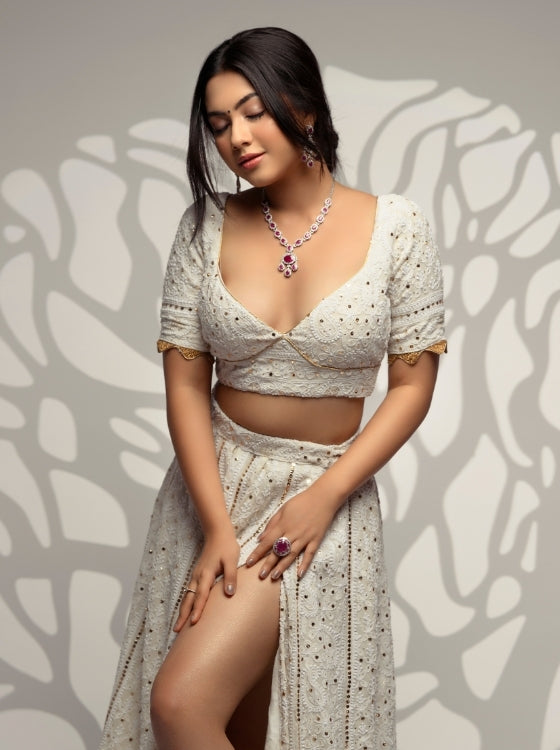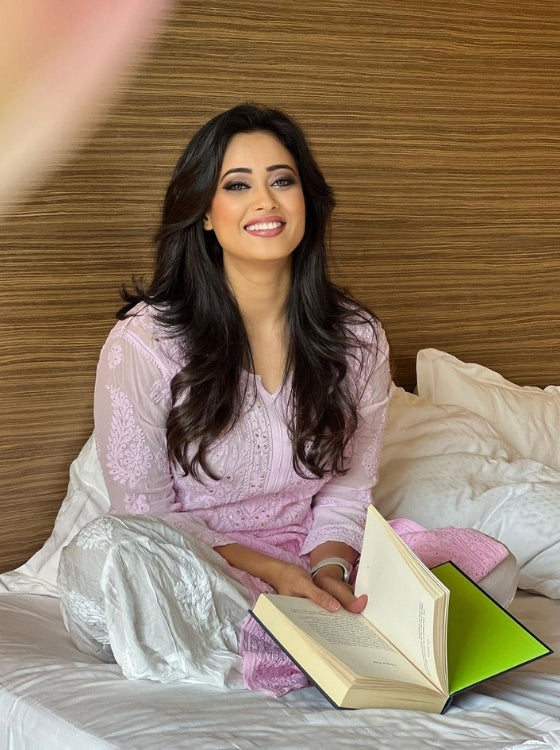In today's world, sustainability and fashion are becoming increasingly intertwined. One way to contribute to eco-friendly fashion is by upcycling old garments, giving them a new lease on life. Chikankari, the traditional Indian embroidery art form, is an exquisite choice for transforming outdated clothes into stylish, unique pieces. Let's explore how you can upcycle your wardrobe with chikankari, combining timeless craftsmanship with contemporary style.
Why Upcycle with Chikankari?
Sustainability: Upcycling helps reduce waste and promotes sustainable fashion practices.Uniqueness: Each piece of chikankari embroidery is unique, ensuring that your upcycled garment is one-of-a-kind.
Preservation of Tradition: By incorporating chikankari, you support traditional artisans and keep this beautiful craft alive.
Affordability: Upcycling old clothes is cost-effective compared to buying new, trendy pieces.
Tips for Upcycling with Chikankari
1. Identify the Garments to Upcycle
Look through your wardrobe for old or plain garments that could use a makeover. Common choices include:
- Plain kurtas or tunics
- Old sarees or dupattas
- Denim jackets or jeans
- T-shirts or tops
2. Choose the Right Fabric
Chikankari works best on natural fabrics like cotton, linen, silk, and muslin. Ensure that the fabric of the garment you wish to upcycle is suitable for hand embroidery.
3. Select the Design
Choose a chikankari design that complements the garment and its existing style. Floral patterns, paisleys, and geometric designs are popular choices. You can find inspiration online or work with an artisan to create a custom design.
4. Find a Skilled Artisan
While you can try chikankari embroidery yourself if you have the skills, it's often best to work with a skilled artisan. They have the expertise to create intricate designs and ensure the embroidery is durable and beautifully executed.
5. Plan the Placement
Decide where you want to place the chikankari embroidery on the garment. Some popular options include:
- Around the neckline and cuffs of a kurta or tunic
- On the back of a denim jacket
- Along the hem of a skirt or dress
- On the pockets of jeans
6. Add Personal Touches
Incorporate your style into the upcycled garment. You can add beads, sequins, or mirror work to the chikankari design for extra flair. Mixing different embroidery styles can also create a unique look.
7. Care and Maintenance
Once your upcycled garment is ready, ensure you care for it properly. Hand wash or dry clean chikankari pieces to preserve the delicate embroidery. Store them in a cool, dry place to prevent damage.
Upcycling old clothes with chikankari embroidery is a fantastic way to embrace sustainable fashion while celebrating a traditional Indian craft. By following these tips, you can transform your wardrobe into a collection of unique, stylish pieces that reflect your commitment to eco-friendly living and timeless artistry.
Remember, each upcycled garment tells a story of creativity and sustainability. Start your upcycling journey today and give your old clothes new life with the magic of chikankari.

